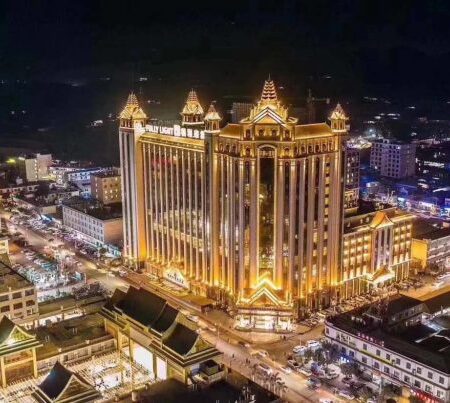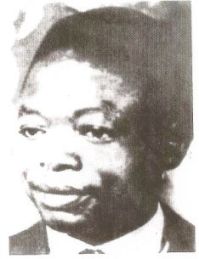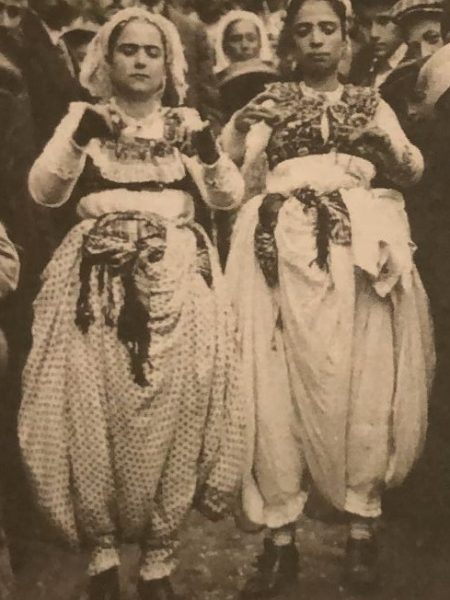Preface
Fascism in Italy legally ended at the end of the second world war and from that moment the country was administered as a democracy. Political parties, social aggregations and a continuity of that mentality in some parts of the population kept alive the legacy of Fascism throughout the decades. The purpose of this essay is to demonstrate that the Italian political environment is still permeated with Fascist elements, especially with the advent of the last far-right government. This paper will provide a clear presentation of the nature of Fascism itself, endowing the descriptions of historical events and reporting scholars’ definitions and studies on the topic, as well as the pre-existing conditions that led to the creation and development of the Fascist culture. This study will then later focus on the infiltrations of the Fascist matrix inside the political spectrum of nowadays Italian politics, looking at who are the people that are now holding the highest positions of the state and rest the gaze on their past, in order to understand better their state of mind that will be then reflected in their actions and political moves. Some recent events in which the Fascist inspiration was captured will be analyzed through the lens of the political response to them. Lastly, the key element surrounding the Fascist culture, which is the abuse of violence, will be analyzed through a comparison between how it was present in the society during the ventennio and how its legacy persists now.
1 What is Fascism?
1.1 The Genesis of Fascism
The definition of Fascism is a complex topic to approach. The movement finds its coherent and public representation after a long debate and the final meeting of different waves of thoughts with divergent opinions about the path and the ideology the party should have followed. Many people would argue saying that Fascism was born as a consequence of the Italian failure in the First World War, even though it is clearly possible to recognize some of the Fascist distinctive behaviors throughout a more extended period of time that finds its starting point years before and that would deep their roots during the tragedies of the war. Italian historian Alessandro Barbero, among the other elements, would indicate as a characteristic typical of the whole ventennio that bejeweled rhetoric that does not really mean much more than its pretty words, a way of talking and giving speeches that would almost feel fictional today but that back then was able to ignite hopeless soldiers’ souls (which was very much needed in war times). The so-called “defeat of Caporetto” was the 12th battle that the Italian army fought at the war’s end, and they lost it. This episode is so relevant because it is considered to be the final clash that led Italy to be left out of games and not be able to sit at the winner’s table. From the narrative surrounding that episode created by the high military roles that lead the battle, the fault of that disastrous defeat was to be given to the soldiers rather than to the generals, described by the latter (more specifically by Cadorna and his men) as incapable, weak and lacking in courage. The truth is that the army’s commanders gave their orders with some words so majestic but at the same time so airy, so abstract and without tangible content that soldiers were left on their own. The generals of Caporetto, a few days into the battle, sent orders such as “the artillery must be positioned with genius moves and cleverness, the shots must be masterful” but on a concrete level, they did not tell the soldiers how or where to place these artillery. Their words were an end in themselves and simply meant nothing. This type of attitude in speaking, which however did not lead to concrete facts, is typical of all charismatic leaders but especially of Mussolini and the great Fascist hierarchs. At the end of the day, due to this despicable manner of portraying soldiers’ actions blaming them for the loss of the war, it became a common belief shared among all the higher classes that the Italian population needed a guide, it needed to be “taken care” by some much more adequate aristocracy “whose social engine was the middle classes and whose ambition was to create a new civilization” as Italian historian Enzo Traverso said. Fascist politics revolved entirely around the concept of the “nation-state” which was the idea of a hierarchically organized society subordinated to a political aristocracy, necessary to impose order on the masses and prevent the degeneration of society into chaos. Fascism was born as a response to the tragedy that the First World War brought to Italy and it consolidated itself in the following years but it definitely was built upon prevailing attitudes and state of mind that were characterizing the previous period, one of which is the disproportionate and outrageous use of violence that then lead to the militarization of the state and the advent of the totalitarian state.
1.2 Fascism as an Ideology
Fascism, on a practical level, happened in three intertwined dimensions: violence, the militarization of the state and totalitarianism (which means that only one political party was admitted into the country’s government). When it deals with an ideological level, the movements drove different roads to embrace people’s supportiveness. At some point, which could also be considered the beginning of the evolution of the Fascist mentality, Fascism aimed to be a surrounding reality that would have embraced every single aspect of people’s lives, especially the most private ones. According to Enzo Traverso, Fascism was at the same time a revolution, an ideology, a “Weltanschauung” and a culture. As an ideology, it was presenting itself as a rejection of Marxism and Communist realities that arose from the inspiration of the Russian revolution in Europe. As a “Weltanschauung”, Fascism had a philosophical approach with the purpose of creating a pure and authentic ideal “new” Italian person that will be referred to as a “New Man.” As a culture, Fascism tried to transform the collective imagination, penetrating private environments by fusing the public and the private into a single national community. The state wanted to be part of every Italian by invading their own privacy and manipulating it. As Traverso said:
“Fascist culture glorifies action, virility, youth and fighting, translating them into a particular image of the body, into gestures, emblems and symbols aiming to redefine the national identity”
If on the one hand Fascist culture and mentality used to glorify masculinity and aggressive behaviors, on the other hand all of that could happen only because there was always a minority to compare which was considered morally and practically inferior. To be concrete, the eulogization of the virile, strong and unbeatable men shined because the shadow was covering the fragile, weak and definitely beatable women. This categorization works for every element in the population that was selected to be adored and followed.
“All those values required an antithesis corresponding to different figures of outsiders: gender outsiders as gays and women not accepting their subaltern position; social outsiders as criminals and thieves; political outsiders as anarchists, Bolsheviks and subversives; racial outsiders as Jews and colonized peoples. They carried in their minds bodies the signs of “degeneration” symbolizing the antithesis of bourgeois normality […] The Jewish intellectual living in the towns, far from nature, not engaged in sports, thinking instead of acting, incarnated the decadence to which fascism opposed the physical strength, courage, hatred of danger and the fighting ethic of its “New Man.” Jews, gays and women were outsiders par excellence, allowing fascism to elaborate its positive myths of virility, beauty, physical and moral health.”
This way of shaping society based on power relationships in which all the power is held by specific elected portions of the population at the expense of a “minority” is still nowadays very alive.
1.3 Fascism socially
According to Italian historian Emilio Gentile, Fascism is totalitarian because of the fusing of the myth of the ‘New Man’ and the cult of technology, hence he would describe Fascism as “the most complete rationalization of the totalitarian state”. Fascism aimed at the ambitious goal to implement an anthropological revolution to forge a new Italian race of rulers, conquerors and creators of civilizations. They believed that the success of their entire totalitarian experiment of building a “new man” and a new civilization depended on the success of the anthropological revolution. When it deals with women, they just had to fit into the stereotypical mother-wife-hearth angel prototype.
1.4 Fascism and Violence
With the advent of the Fascist dictatorship a phenomenon referred to as squadrismo arose quickly within Italian territory. The squadrismo was a political-social aggregation of militarized people whose peculiarity was the performance of violent activities by action squads that operated without any scruple, with often mournful intimidation and brutality against democratic political organizations. Fascism systematically used it as an instrument of political fight whose main task was to carry out repressive actions in the working-class and peasant centers. Between 1921 and 1922 in Italy took place what will be later called the “black biennium”, a period of time characterized by violent attacks by Fascists against the labor movements and the fragile institutions of the liberal state. In November 1920 the headquarters of the Municipality of Bologna were assaulted and, after that, the cases of conflagrations and lootings carried out by the action squads multiplied. Many leaders of the opposition were killed or harmed too, such as the socialist deputy Giacomo Matteotti, who was murdered in June 1924 and who previously had denounced the violence committed by the Fascists during the political elections in April of the same year. Scholar Matteo Millan believes that the squadristi practiced violence as a natural and visceral act since it defined their concept of Fascism and their lives as new Fascist men. Political violence was performed throughout the whole ventennio against any type of opponents to the government, whether they were politicians in the early Fascist period that were against the totalitarian regime, or even just civilians that did not stick to the characteristic that the true Fascist person should have had (anyone who was not Christian or heterosexual, as well as disabled people, homeless and any weak element in the society were persecuted to the point they were forced into labor and extermination camp along with the coalition that Fascism stipulated with the Nazist Germany).
1.5 Fascism as a Religion
As it was proclaimed by Gentile, most of the totalitarian movements such as Bolshevism, Fascism and Nazism established themselves as “political religions”. They intensified the sacred aura that has always surrounded power in general, conferring a numinous and heavenly nature to the power held by the state and the leader in order to let them define the meaning of life and the ultimate goal of existence, which is very typical of religious feelings. Gentile wrote in his book “Fascismo: Storia e Interpretazione” about religion and the state the following passage:
“Political religions, as Jean-Pierre Sironneau explained analytically, reproduce the typical structure of traditional religions, articulated in the four fundamental dimensions of faith, myth, ritual and communion, and propose to achieve, through the State or the party, a “metanoia” of human nature, from which a “new man” must arise, regenerated and totally integrated into the community.”
Therefore, the Fascist people were conceived as a group bound by ties of faith. The Fascist did not choose a doctrine or discuss it, because he was above all a believer and a fighter. Adventure, heroism, the spirit of sacrifice, mass rituals, the cult of martyrs, the ideals of war and sport, fanatical devotion to the Duce: these were the characteristics of the behavior of the fascist group, peculiarly relatable to the approach that an insider of a religious movement would have towards their deity system and religion institution.
2 Fascism legacy today
2.1 Fascism infiltrations in the political institutions
It is pretty licit nowadays to question the existence of a Fascist attitude in different aspects of daily life basically because many characteristics of what was the Fascist regime back then vividly resonate into an echo of actions and words explicitly present in the surrounding reality.
Fascism’s shadows are present in Italian politics in many different ways, coming from Ministers that publicly declared to proudly hold a Mussolini bust in their living room, going to politicians that create new laws just to protect themselves from their own crimes (from Latin “ad personam” laws, which are legislative measures introduced by statesmen to safeguard themselves and make their actions, previously considered illegal, now legal. A striking example of all this are the thirty-eight ad personam laws that ex-Prime Minister Silvio Berlusconi promulgated during his mandates). Current Italian Premier Giorgia Meloni, who holds the fourth position in the statal machine, who is the fourth most important person alive in Italy nowadays, started her career in the 90s in the youth section of the MSI (Movimento Socialista Italiano) called “Fronte della Gioventù”, the political party that was established in Italy after the death of the Duce and the end of the war by Fascist people in order to remember Mussolini and disseminate Fascist ideology after the fall of the dictatorship. It is important to highlight the ideology in which this movement was founded since it was publicly declared to be a political party of Neo-Fascist inspiration, considered by their own members the heir of the Republican Fascist Party founded by Benito Mussolini. The Italian Prime Minister of 2022 proudly comes from there and is not willing to deny it even when it deals with the symbol of her political party, which is made by the tricolor flames that characterized the Mussolini symbol as well. The second position in the state is held by the President of the Senate of the Republic, currently Ignazio La Russa who, in the whole country, is second only to the President of the Republic, now Sergio Mattarella. This statement was interviewed in 2018 at his own house and a video of his place was made by the crew . There, he fiercely shows to the camera how he furnished his house and it turned out that the spectators would find themselves in front of a jubilation of images from the ventennio, photos of Fascist colonialism, black-shirts and Balilla memorabilia, and most terrifically, bas-reliefs, busts and statues of the Duce. La Russa spent his whole life in the name of the conservation and memory of Fascism by participating in all Fascist-inspired movements since adolescence and then defending as a criminal lawyer in the 80s some of his former colleagues, who were openly Fascists.
Examples like that are easily findable in quite a few people who are currently governing the country, those mentioned above are simply the ones that created more scandalous reactions considering the role they have, and if on the one hand Italy is a Democracy, which means everybody can say and do whatever they want as long as they are not bringing harm to others, on the other hand what is really to be considered dangerous is the mentality that the politics of those people would bring when put into actions in the society. This is what they are at their core, this is their way of thinking that inevitably would be translated into political moves piloted by their mind, and the problem arises when people shaped like that hold statal positions because their choices would surely affect all the citizens in the country in a way or another.
Historians like Emilio Gentile were asked about their opinion on a possible comeback to Fascism for the country, which was swiftly denied, “I don’t think it makes any sense, either historical or political, to argue that today there is a return of Fascism in Italy, in Europe or in the rest of the world” said Gentile during an interview to the Italian newspaper Il Sole 24Ore. The reason why it was just not considered an option is because, logically, nowadays it seems completely impossible to come back to a dictatorship or a similar organization of the state, which is realistically true, it just won’t fit the society anymore and absolutely nobody would like (or would accept) to live under such pressure. There is no Fascist-like built government and so, on a practical level, there is no Fascism at all. That is not incorrect, it is just not the lens through which the issue is aimed to be analyzed in this paper. Noting that on a practical, material and official level the Italian state is not a one-party totalitarian and militarized state, let’s shift the focus to the third typical characteristic of the movement: violence. This is an ideological characteristic and being such, it means that it lives in people’s minds regardless of external conditions, and it is normal to be worried about it being spread as an ideology by the people in the government that claim to have it intrinsic in their way of being.
Journalist Isabella de Silvestro would write:
“In an era in which we have seen the strengthening of sovereignty in Europe and the spread of parties that support xenophobic, discriminatory, homobitransphobic, sexist and, in general, ideologies that exclude everything that is different or subordinate to those who hold rights and powers, the fascist label has been dusted off several times […]. A march on Rome, an authoritarian regime, a law that legitimizes censorship […] are not necessary to track down clear signs of recoveries (and regurgitation) of Fascists of greater or lesser extent. It is a question, for example, of the strengthening of a primitivist and retrograde mentality which expresses hatred for everything that is extraneous to the “roots” and which can be categorized as weak.”
2.2 Governmental Moves of Fascistic Heritage: public violence of Fascist Origin and Abuse of Power by the Police
The following section of this essay is going to chronicle events that happened in Italy in the last few years that present a clear Fascist pattern in the methodology of the management of those events by the government. Those examples are going to be used as an auxiliary and explanatory element to support the thesis of this essay.
Back in February 2023 two high school students from the Liceo Classico Statale Michelangelo were attacked outside their school in Florence by a group of people that were handing out flyers of their far-right student aggregation. The clash fastly became violent and the boys were copiously hit with punches and kicks. This event generated different narratives around itself and the reaction of the politicians was unexpected. After the Michelangelo high school vicissitudes, the principal of the Da Vinci high school of Florence published a letter addressed to her students in which she said “Fascism in Italy was born on the edge of any pavement, with the victim of a beating for political reasons who was left alone by indifferent passers-by” as reported on the newspaper La Repubblica. If on the one hand the Major of the city Dario Nardella immediately reacted by defining what happened as an “intolerable squad aggression”, on the other hand the Minister of Education and Merit Giuseppe Valditara would comment on national television by saying:
“It is a completely inappropriate letter, I was sorry to read it, it is not up to a principal to send messages of this type and the content has nothing to do with reality: in Italy there is no violence and authoritarianism, there is no fascist danger. […] I don’t know what to do with these letters, they are ridiculous letters, and thinking that there is a fascist risk is ridiculous. I find there is more and more an attack on freedom of opinion and a raising of the tone by transforming the controversy into a campaign of hatred, delegitimization and sometimes falsifying reality”
Minister Valditara represents the political institution of the educational system in Italy and he publicly denied the obviousness of the facts by saying that there is not violence or Fascist danger, while, on the contrary, both the aforementioned violence and Fascist danger are totally alive since, on a practical level, two young boys were the victim of a squad attack which can be called like that exactly because the people that performed the violence are active participants of far-right movements of Neo-Fascist inspiration. The political institution not only didn’t act in order to prevent those episodes in the future but blamed the people that complained about the event by saying that they are limiting the freedom of expression of the attackers, justifying the latter and without spending a single word about the boys who suffered it.
On the 9th of October 2021 the CGIL headquarters (Italian General Confederation of Labour) were assaulted by some participants of the “No Green Pass” demonstration and some important members of the Neo-Fascist party called Forza Nuova. They were manifesting against the new law promulgated by the government that forced people to have the green pass certification to work due to the Covid-19 pandemic. Many people got hurt and this time it seemed undeniable the Fascist origin of the clash simply because Forza Nuova declared that the party itself is built upon Neo-fascist idealities, and even though it was so clear and impossible to misunderstand, politician Giorgia Meloni that back then was the head of her party Fratelli d’Italia said “It’s definitely violence and squadrism, but I don’t know the matrix”. Now, in order to better comprehend the significance of those words, it is important to put focus on what concretely they are meaning: the aforesaid “matrix” of those attacks is indisputable and everybody knows it but Meloni refuses to admit it. As the public figure she is, the message she is giving to the population is that it is acceptable that a person would not recognize a Fascist act as such, and if those acts are camouflaged and hidden people will keep on living as if they never existed, with the consequence of not fighting them and agree with those events to happen again.
In May 2023 a transgender woman was tortured by the police in Milan until she was covered in blood in the middle of the street in the daylight. Agents were called for unclear reasons (there are different versions of that in the sources) but suddenly started to hit her with truncheons, smashing her face and insulting her with homophobic and racist phrases. The response of some members of the political party at the government right now Fratelli d’Italia was controversial: “The images of the video are not clear as they only show a few moments of the dynamics that took place” have said Senator De Corato, “Officers were forced to use a spacer and spray to take her away, and we stand with them” said the secretary of the police union. This is a case of abuse of power performed by the police since the officers acted extremely violently towards a person who was not armed, that was not showing violence and that was defenseless. The reasons why the police decided to operate in this way are unknown but, due to the homophobic and racist insults, the victim sued them not only for unjustified violence but also for hatred crimes. Now, the point is not the motivations that pushed the police to act like that but the fact that they did it thinking they had the total power and legitimation to do that. They even knew that they had their back protected by the far-right institutions that now are governing since those political forces based most of their propaganda on the reinforcement of the police praising it and highlighting their important role in society, which of course is important, but now people are more scared of police than they are of criminals because they are simply not protected by them. The gratuitous and unmotivated violence of the police decriminalized and pushed by the politics just doesn’t sound new at all to this country since it was the prerogative element of the Fascist ventennio and those police behaviors resonate a lot to the unjustified brutality of the militarized action squads of Mussolini.
3 Conclusion
The type of violence that the country witnessed back in the Fascist era was on another level if compared to the contemporary days, even if it is clearly possible to see a thread that would connect the ideology pursued back then that permeated the actions of brutality to what is going on today in the political framework as well as in a more informal environment (normal people daily life’s actions such as discrimination and hatred) as a reflection of the latter. There is a cultural heritage of violence that persists throughout the years and that came from the Fascist ideology and behaviors. On the one hand, it may seem complex, and sometimes outrageous, to compare the atrocities of the colonial wars in Ethiopia with the gas weapons (just to cite one of the highest points that Fascist violence reached) with the Neo-Fascist parties’ cruelty at some squares manifestations, but in the other hand it is fundamental to keep in mind that those Fascist type of dreadful acts of violence were so inhumane and severe since they had the possibility to get as far as they did because they were legitimized and permitted by a government that not only closed an eye on it at the start, but that later also deliberately used it as a political tool to achieve what the government itself wanted (which was the totalization of the state and the submission of the minds). To be concrete, as long as the government permits the systematic use of violence as an acceptable way to reach personal and political goals, the country would not be able to define itself as free from its Fascist heritage. This paper’s final goal was to demonstrate that the Fascist legacy is vividly present in the Italian political environment and all the institutions that hang from it, like the police, are shaping themselves around that approach. There is no need for a Duce to keep Fascism alive, but the intervention of a non-corrupted government to fight it and kill it permanently is desperately urgent.









